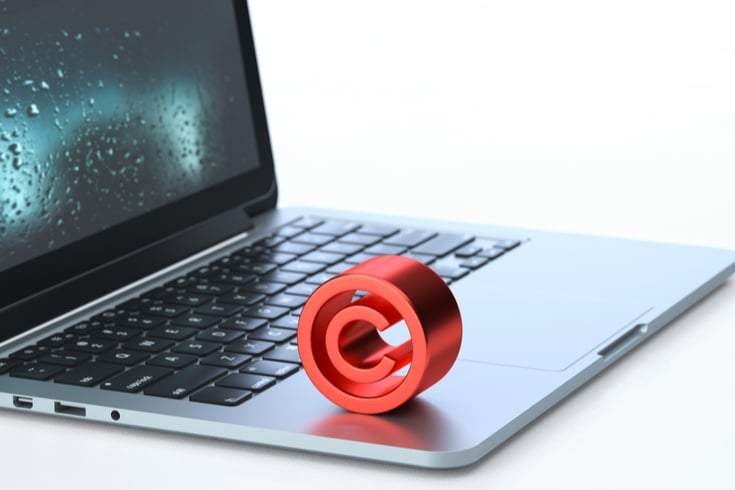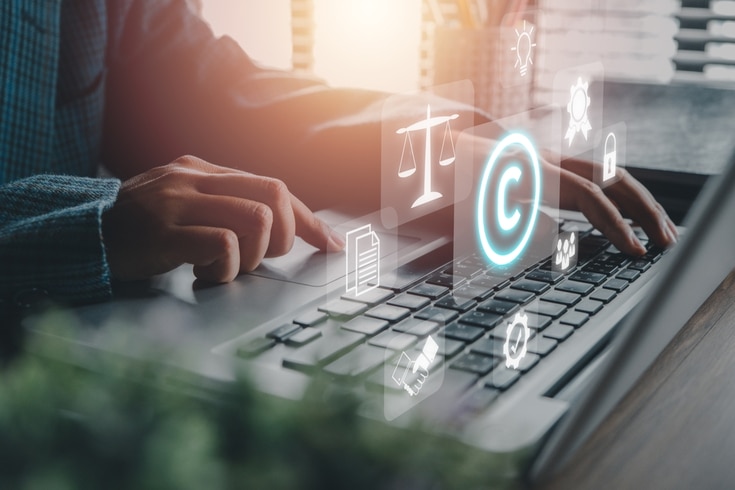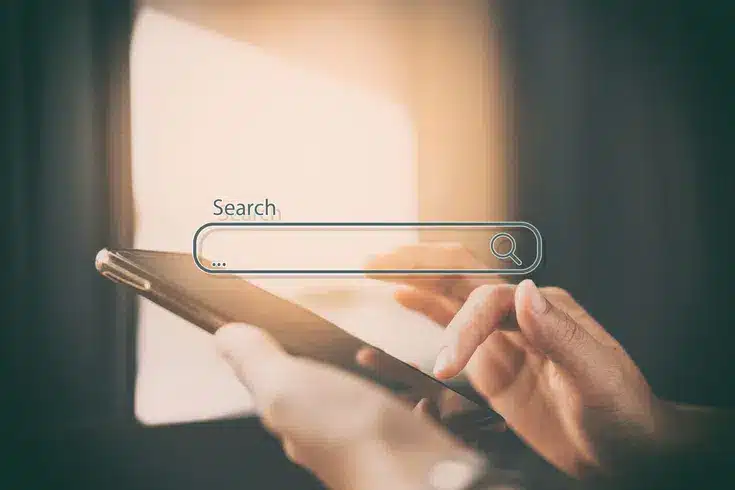Two Approaches to Copyright Infringement on YouTube: What are Takedown Notices and Content ID Claims?

Copyright holders who discover their protected content has been posted on YouTube without permission can file a copyright infringement claim with YouTube. YouTube offers two methods for dealing with copyright infringement: a takedown notice due to copyright infringement or a Content ID claim.
Furthermore, users who receive a Content ID claim can file an objection.
In this article, we will provide a detailed explanation of the two methods for dealing with copyright infringement on YouTube, namely ‘takedown notices’ and ‘Content ID claims’, and what users who receive such claims can do.
Notice of Removal Due to Copyright Infringement
A “Notice of Removal Due to Copyright Infringement” is a legal request to remove content by making a claim of copyright infringement to YouTube.
If a work protected by copyright is uploaded without the permission of the copyright holder, the copyright holder can send a removal request due to copyright infringement using a web form and request the removal of the content. This notice of removal regarding copyright infringement is available to any user who has a YouTube account.
For copyright holders, it is the quickest and easiest way to request removal based on copyright infringement, but since it is a legal request, the submission of the web form must be made by the copyright holder themselves or their official representative.
What is Content ID?

Content ID is a copyright management system uniquely developed by YouTube, which can only be used by copyright holders referred to as content partners who have contracts with YouTube.
How Content ID Works
Content ID is a matching detection system that automatically identifies potentially copyright-infringing content. It compares videos uploaded to YouTube with a database of audio and visual data sent to YouTube by copyright holders.
When a match is found, a Content ID claim is automatically generated. There is also a method to manually create a claim. In either case, the content partner (copyright holder) can choose one of the following measures according to the settings of Content ID:
- Block the video from being viewed
- Monetize the video by placing ads on it, and possibly share the revenue with the user who uploaded the video
- Track statistical information about the viewers of the video
Eligibility for Using Content ID
Content ID is not available to everyone. It is a system for managing intellectual property for companies and organizations that operate large-scale content, such as record companies and film production companies, and have complex rights management needs. Therefore, to be eligible to use Content ID, it is reviewed whether the company or organization needs to manage copyrights, whether the copyright holder’s content can be claimed through Content ID, and whether there is an actual necessity.
Once approved for Content ID, the copyright holder must agree to the contract. This contract stipulates that it can only be used for content that owns exclusive rights, and the copyright holder must own exclusive rights to the content being evaluated.
Examples of cases where exclusive rights are not owned because there are multiple copyright holders include:
- Music works such as mashups, best versions, compilations, remixes
- Gameplay (story development, operation methods, etc.), software images, trailers
- Music and videos used without permission
- Music and videos that have permission but do not have exclusive rights
- Recordings of performances (including concerts, events, speeches, shows)
It is also stated that if you do not have rights worldwide, you need to declare in which regions you have exclusive ownership.
What Should You Do If You Receive a Content ID Claim?

If a user who has uploaded a video receives a Content ID claim, there are several options available depending on the situation.
Even if the claim comes from an organization or group with legitimate authority, not all claims are valid. For example, the system may mistakenly generate a claim due to a misrecognition, such as when the song title claimed is completely different from the original song. There is also the possibility of claims being made intentionally to abuse the system. Therefore, users who receive a Content ID claim can also file an objection.
Four Options When You Receive a Content ID Claim
If a user receives a Content ID claim and agrees with it, the following options are available:
- Do nothing
- Delete or modify the claimed content
- Share the revenue
- File an objection
Option 1 is for when you believe the claim is valid and you leave it as is. You can change this later.
Option 2 is for when you believe the claim is valid and you decide to delete the claimed content. If you correctly perform one of the following three options, the related claim will be automatically withdrawn:
- Delete only the claimed segment from the video
- If only the audio of the music in the video has been claimed, replace the audio track in the video with a song that can be freely used from the YouTube Audio Library
- If only the audio of the music in the video has been claimed, mute the claimed music
For option 3, users participating in the YouTube Partner Program may be able to share revenue with the music publisher if the music in the video has been claimed.
What is filing an Objection?
If a user believes that a Content ID claim is invalid, they can file a dispute. Disputes are filed in a prescribed manner, and you select one of the following reasons for the objection:
- Original content
- License
- Copyright exception
- Public domain
Option 1 is for when you own all the copyrights related to the content.
Option 2 is for when you have obtained a license from the copyright holder.
Option 3 is for when the use of the work is a manner of use that is not covered by copyright, such as fair use recognized under U.S. copyright law.
Option 4 is for when the content can be used by anyone.
When you file an objection, a notice is sent to the claimant with a 30-day response deadline. If the claimant agrees with the objection, or if there is no response from the claimant within the deadline, the claim is considered withdrawn.
If the claim is withdrawn, the revenue settings are automatically restored. On the other hand, if the claimant still believes there is a reason for the claim even after receiving the objection, the claim will continue. In this case, the user who received the claim can request a re-examination.
Points to Note When Filing an Objection
While an objection is a legitimate countermeasure granted to users who receive a Content ID claim, care must be taken as there is a risk of penalties if you repeatedly file objections or file unjustified objections.
Also, if the claimant is a legitimate rights holder, not only may they make a Content ID claim, but they may also request the removal of content on the grounds of copyright infringement. Therefore, it is advisable to file objections carefully.
Handling of Revenue in Objections
The handling of revenue related to the content targeted when a Content ID claim is received can fall into the following patterns:
- Do nothing
- File an objection within 5 days of receiving the claim
- File an objection more than 5 days after receiving the claim
In case 1, the withheld revenue is paid to the claimant after 5 days.
In case 2, ads continue to be displayed, and all revenue generated from the video during the time the claimant is reviewing the objection is withheld.
In case 3, revenue is withheld from the date the objection is filed.
Note that if you file an objection more than 5 days after receiving a Content ID claim, the revenue prior to the objection will be distributed to the claimant. However, if the claim was invalid, you may be able to recover the revenue through a claim for unjust enrichment.
Summary: Consult Lawyers for Copyright Infringement on YouTube. Explaining Takedown Notices and Content ID Claim
On YouTube, there are two methods prepared to prevent copyright infringement by users: removal notifications and Content ID. This allows copyright holders to respond to copyright infringements.
However, copyright holders who repeatedly make false claims through Content ID need to be careful, as they may have their access to Content ID disabled or their partnership with YouTube terminated.
Introduction to Our Firm’s Measures
Monolith Law Office is a legal office with extensive experience in both IT, particularly the internet, and law. In recent years, we have been handling a large number of advisory cases for popular YouTubers and VTubers on the internet. The need for legal checks in channel operations and contract-related matters is increasing. Our firm is addressing these issues with a specialized team led by experienced lawyers.
Category: Internet





















